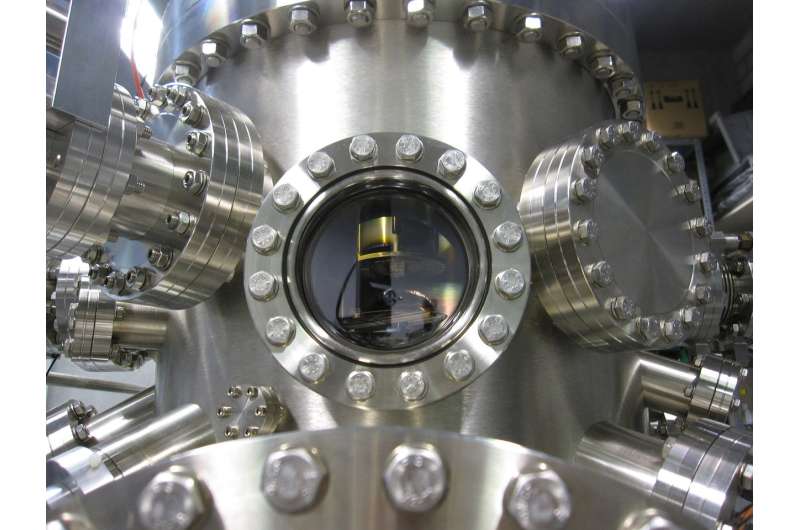The limits of hematite

Hematite and other transition metal oxides are used in the renewable production of hydrogen. Researchers at the TU Darmstadt have discovered why the materials reached their limits doing so. Their results have now been published in Nature Communications.
The solar-powered splitting of water at the boundary between a semi-conductor and water (artificial leaf) is an elegant method for the renewable production of hydrogen as a storable, easy to transport fuel. Light is absorbed in the semi-conductor and converted into electric (photo) voltage that needs to be big enough to split the water molecules into H2 and O2. It can theoretically be estimated by the size of the band gap of the semi-conductor – the gap between the highest occupied and lowest unoccupied energy level.
Research in recent decades has focused on transition metal oxides as absorber materials, which initially appear to be ideal for water splitting, since many of the representatives of this material class possess band gaps of the correct size. A second look reveals, however, that in reality the photovoltages that can be generated using transition metal oxides are often too small to create hydrogen. This fact is not understood, and was the starting point for a study by Christian Lohaus, Professor Andreas Klein, Professor Wolfram Jaegermann (Department of Surface Science, Faculty of Material and Geosciences at the TU Darmstadt), the results of which have now been published in Nature Communications.
Fundamental investigations
Fundamental investigations were carried out on the much-examined material hematite (Fe2O3) to investigate its inherent limits of photovoltage which are determined by the maximum energetic shifts of the so-called Fermi level within a material. As a statistical quantity, the Fermi level defines the number of electrons and electron holes in a semi-conductor. Its position can be manipulated by adding or removing electrons. The further it can be moved upward and downward, the greater is the photo voltage that can be generated in the semi-conductor.
Within hematite, the Fermi level cannot be shifted upwards beyond a certain value well below the optical bandgap. Instead, a charge reversal from Fe3+ to Fe2+ was observed. This reversal is part of the development of so-called polarons, which are already known as the limit for transition metal oxides in electrical conductivity. The work by the team in Darmstadt increases the understanding of the effects of polarons by the fact that they also fundamentally restrict the creation of the photovoltage. This is why the optical band gap that promises a higher photovoltage is not the defining criterion for the usability of a material in light-driven water splitting. Instead, the permitted range in which the Fermi level can be shifted is decisive. This fact clearly limits the applicability of metal oxides in light-powered water splitting quite significantly.
More information: Christian Lohaus et al. Limitation of Fermi level shifts by polaron defect states in hematite photoelectrodes, Nature Communications (2018). DOI: 10.1038/s41467-018-06838-2
Journal information: Nature Communications
Provided by Technische Universitat Darmstadt




















